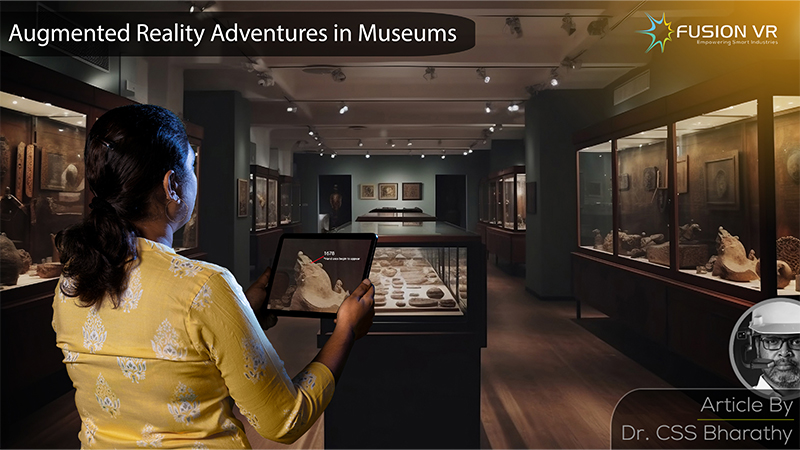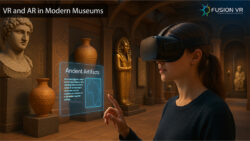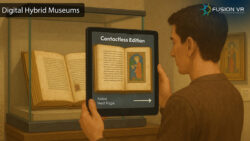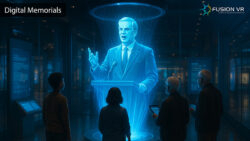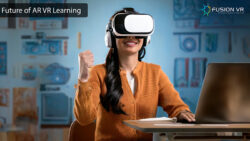While I like to explore museums by myself, I would like to have the assistance of an experienced guide. This guide is someone who should not only provide information but also valuable insight into the exhibits housed there. In reality, this wish has become increasingly difficult to accomplish as there are fewer guides around and most of them seem to dish out only the common facts and sometimes stories or legends whose authenticity is questionable.
So what do I do when I’m at a museum and can’t find a suitable guide?
Well, I could pick up an audio guide that describes what an artifact is about by pressing a numeric code into the dial pad provided on the headphone set. Usually, the audio quality isn’t great and I tend to lose interest. The advent of augmented reality technology is changing this experience in a museum. A growing trend is the adoption of these technologies in museums to improve the overall visitors’ experience. Augmented reality delivers a highly interactive museum that paves the way for a memorable museum experience.
Here’s what museums need to do to deliver an AR museum experience. They need to engage and work with museum staff, content creators, and AR solutions developers to create AR applications that are interactive, immersive, and engaging. These apps must be easily available for downloading onto the user’s devices. QR codes can be provided in brochures and posters to enable an easy download and installation of these apps. They also need to be made free and easily accessible. The most important work is to create the content, the user interface and deliver an unmatched user experience (UI/UX) for the visitor. The other factor is to design the app for all groups and also make it more gamified and fun for a younger audience who belong to the digital generation. The engagement created while using the app is what delivers what would be a memorable experience for the visitors. Finally, they need to deploy support staff to help visitors install the app and assist them with any queries that they may have.
All the user needs to do is download and experience the app. AR apps are easily used on smartphones and AR wearable devices. Fortunately, smartphones are commonplace and those without one are increasingly harder to find. Once installed these AR apps transform the way you see an artifact. Holding your device and viewing the artifact through the app, which deploys the device camera, opens up the options to gain a better understanding and experience.
If you’re viewing a painting, it could provide a textual or audio description of it with complete details on the painter and how or when it was done. More technical details on the painting can be obtained by talking to a virtual expert. Say you are now viewing an Egyptian mummy in a sarcophagus and you’re curiosity goes into overdrive. The app would allow you to rotate and view the digital rendering of the mummy in all directions or see an exploded view of it. Curious about how it looks inside, you could get an X-ray view of it too. The understanding and appreciation of each artifact just expands a hundredfold with the use of cleverly designed AR museum experience applications. All of this exploration is personalized with your own smartphone.
Fusion VR is one of the leading AR VR solution providers for digital museums and AR experience centers in India. We have delivered exciting, interactive museum experiences that have won appreciation from one and all. The beautiful reality is that augmented reality in museums is here to stay and the future is exciting and bright for museums, developers, and visitors. Our web page on museums and corporate experience centers is the place for you to start. This, we hope, will help broaden your view of the exciting potential of augmented reality and virtual reality in modern-day museums.

